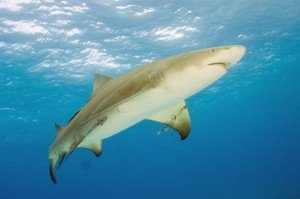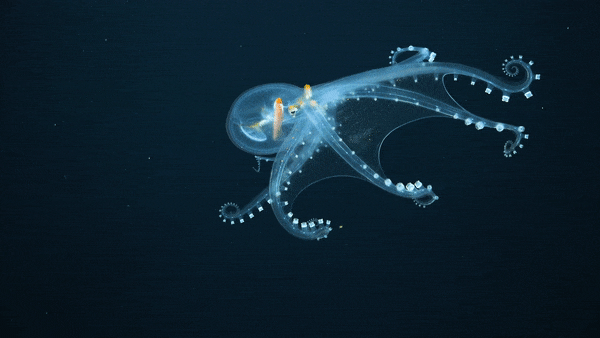The Only Mukbang I Can Afford 😭

the only mukbang I can afford 😭
More Posts from Offishialghostieaccount and Others

There are four types of fish scales!
Cycloid scales are thin, overlap, and flexible. They're found on primitive teleosts (like minnows and carp).
Ctenoid scales have small, backwards pointed scales (known as cterns) make the fish more hydrodynamic and faster. They're found on Advanced Ctenoids (like perch and sunfish).
Ganoid scales are thick, diamond-shaped, and mostly non-overlapping. They're found on Chondrostei (like sturgeons and paddlefish).
Placoid scales are spikey and tooth-like with nerves. These are found on Chondrichthyes (like sharks and rays).
Ichthyology Notes 3/?
'fairies dont exist' WRONG❗❗cyerce elegans




I'd love some lemon shark facts 💛


Lemon Shark or Negaprion brevirostris
They get their name from their yellowish brown coloring. Lemon sharks, unlike the lone-shark stereotype, enjoy hanging out in groups! They even have preferred individuals to hang out with!

Lemon sharks are also one of the most well-understood shark species and this is because they do well in captivity. Additionally, most of our knowledge of shark physiology and biology stems from studies of lemon sharks!
Unfortunately, this species is nearly threatened; this is mostly due to overfishing. They're not only caught as bycatch, but are a target for some fisheries. Their meat, skin, and squalene are used for human consumption. It's estimated that between 70-90% of shark squalene harvested each year is used in cosmetics. (Make sure to do your research before buying makeup). To harvest the amount of squalene used for our consumption, almost 3 million sharks are killed every year. But there's a great new alternative source that's gaining traction: olives!
The body shape of a fish can tell you a lot about it! It can tell you where they like to hang out, how they hunt, what they eat, and more!
Let's use the Asian Arowana (Scleropages formosus) as an example!

Based off the rounded caudal fin (the "tail"), this fish is not a very fast swimmer
Having the dorsal fin and anal fin right near the end of the fish's body suggests it is an ambush predator
The flat head suggests it hunts at the surface
The upturned, large mouth suggests it catches its prey from below
Arowana are ambush predators that hunt at the surface!
They don't need to go very far very fast, hence the rounded caudal fin (which is the slowest moving fin)
Having posterior dorsal and anal fins are a common trait amongst ambush predator
They primarily hunt at the surface! They will sit near the surface and grab small fish, bugs, crustaceans, and even occasionally a bird!
4. Fish that catch their prey from below sometimes do it via suction. They'll open their large mouth, and as the water gets sucked in, so does anything in the water. And the larger the mouth, more water will more quickly fill into the mouth, catching larger and faster prey
Apparently the Congo river is deep enough that there are several species of fish with cavedwelling adaptations (near-total to total blindness, loss of pigmentation, etc) because light doesn't reach where they live. the fuck



gamer
(source: squidpastry on iNaturalist)
The wonderful Glass Octopus. Living at depths of around 3000 ft and only being about a foot long, these strange little creatures are rarely seen by scientists.



How about the Port Jackson and its adorable smile! I think more people should know about it!
Love your blog! 🦈💖
Thank you so much!
Port Jackson Shark // Heterodontus portusjacksoni

These cute sharks grow to be approximately 1.65 m (5.4 ft) and are found exclusively in the waters of southern Australia. The conservation status for these sharks is unknown, but their eggs have a high mortality rate (only about 11-22% survive) because of high predation.

Unlike a lot of sharks, the Port Jackson shark doesn't have a mouthful of sharp, pointy teeth. They have a front row of small, pointed teeth that lead to wide, flat teeth in the back. These teeth are handy for catching and then breaking the shells of mollusks and crustaceans.

-
 offishialghostieaccount reblogged this · 3 weeks ago
offishialghostieaccount reblogged this · 3 weeks ago -
 limoncats liked this · 3 weeks ago
limoncats liked this · 3 weeks ago -
 secretlifebehindbooks liked this · 3 weeks ago
secretlifebehindbooks liked this · 3 weeks ago -
 maxwellsangel liked this · 3 weeks ago
maxwellsangel liked this · 3 weeks ago -
 freakyspy68 liked this · 4 weeks ago
freakyspy68 liked this · 4 weeks ago -
 travelstranger-on-casualmondays liked this · 1 month ago
travelstranger-on-casualmondays liked this · 1 month ago -
 ehviscerate reblogged this · 1 month ago
ehviscerate reblogged this · 1 month ago -
 facelessdeer liked this · 2 months ago
facelessdeer liked this · 2 months ago -
 la-dame-grise liked this · 2 months ago
la-dame-grise liked this · 2 months ago -
 magicalgirlpropaganda liked this · 2 months ago
magicalgirlpropaganda liked this · 2 months ago -
 canofcampbellssoup liked this · 2 months ago
canofcampbellssoup liked this · 2 months ago -
 xsuishy liked this · 2 months ago
xsuishy liked this · 2 months ago -
 victoria0kir liked this · 3 months ago
victoria0kir liked this · 3 months ago -
 princess-lapine reblogged this · 3 months ago
princess-lapine reblogged this · 3 months ago -
 princess-lapine liked this · 3 months ago
princess-lapine liked this · 3 months ago -
 xija6222 liked this · 3 months ago
xija6222 liked this · 3 months ago -
 anodiary liked this · 3 months ago
anodiary liked this · 3 months ago -
 22-elf liked this · 4 months ago
22-elf liked this · 4 months ago -
 st0nedr3xic liked this · 4 months ago
st0nedr3xic liked this · 4 months ago -
 victorian-cherub liked this · 5 months ago
victorian-cherub liked this · 5 months ago -
 pussygulag liked this · 5 months ago
pussygulag liked this · 5 months ago -
 woonspirals liked this · 5 months ago
woonspirals liked this · 5 months ago -
 yasmincb liked this · 5 months ago
yasmincb liked this · 5 months ago -
 edgarallanpoesmodernmuse reblogged this · 6 months ago
edgarallanpoesmodernmuse reblogged this · 6 months ago -
 youanj liked this · 7 months ago
youanj liked this · 7 months ago -
 shitpunsforshitnuns liked this · 7 months ago
shitpunsforshitnuns liked this · 7 months ago -
 thebodyelectrical liked this · 7 months ago
thebodyelectrical liked this · 7 months ago -
 must-be-mythtaken reblogged this · 7 months ago
must-be-mythtaken reblogged this · 7 months ago -
 asianbedhead reblogged this · 7 months ago
asianbedhead reblogged this · 7 months ago -
 diehardcoolkid liked this · 7 months ago
diehardcoolkid liked this · 7 months ago -
 milf-erasure liked this · 7 months ago
milf-erasure liked this · 7 months ago -
 perfect-puppy liked this · 7 months ago
perfect-puppy liked this · 7 months ago -
 feralcataphrakt liked this · 7 months ago
feralcataphrakt liked this · 7 months ago -
 sweetlew liked this · 7 months ago
sweetlew liked this · 7 months ago -
 cocobious reblogged this · 7 months ago
cocobious reblogged this · 7 months ago -
 jeixart liked this · 7 months ago
jeixart liked this · 7 months ago -
 welshronin liked this · 7 months ago
welshronin liked this · 7 months ago -
 finnseth liked this · 7 months ago
finnseth liked this · 7 months ago -
 electron-flavored liked this · 7 months ago
electron-flavored liked this · 7 months ago -
 rainbow-foxes reblogged this · 7 months ago
rainbow-foxes reblogged this · 7 months ago

she/they18 internally - bodily a minorprofile picture by kiraprismartbanner by fanny-hs
21 posts

